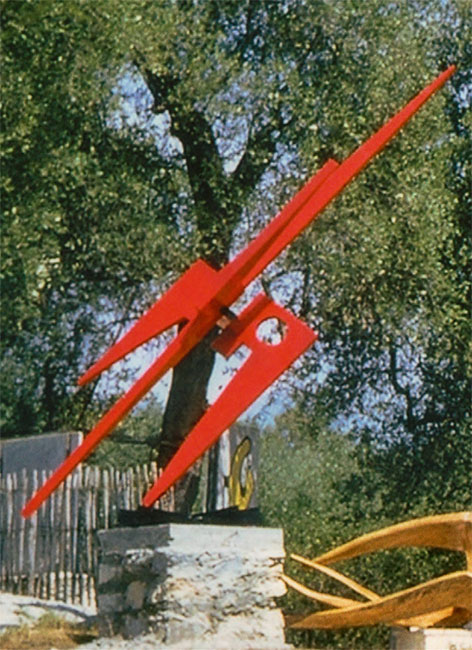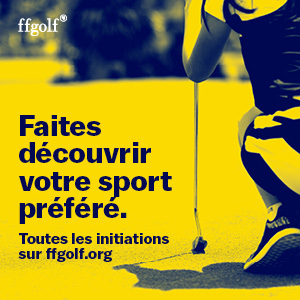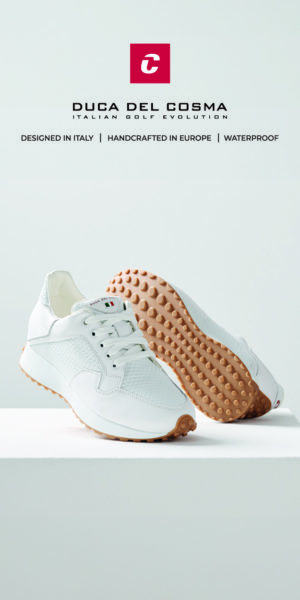Posted on July 18, 2016 in Arts & culture.
Summer 1954 at Biot Architecture Formes Couleur

Color Color Forms exhibition organized by the Espace Group from July 13 to September 10, 1954 in Biot (detail), gelatin silver print, Fernand Léger National Museum © Photo: Dimitri Tibislawsky. Maxime Descombin's mobile oblique © Adagp, Paris, 2016
This outdoor exhibition, organized by members of the Espace Group - founded in 1951 by Félix Del Marle and André Bloc - is intended as a manifesto. For all, it is a question of promoting the integration of the arts in modern architecture in order to conceive an urbanism respectful of social needs both functional and aesthetic.
Among the participants, we discover the most prestigious names (Sonia Delaunay, Alberto Magnelli, Jean Arp, Fernand Léger, Bernard Zehrfuss ...) alongside artists and architects who are beginning to assert themselves (Victor Vasarely, Jean Gorin, Servanes, Nicolas Schöffer, Morice Lipsi, Emile Gilioli, Edgard Pillet, Etienne Béothy, Cicero Dias, Jean Leppien, Robert Jacobsen, Jean Vago, Carlos Villanueva, Etienne Bertrand Weill ..) as well as many unknown young people (Claude Parent, Jean Mégard , André Bruyère, Denis Brihat, Maxime Descombin, Nicolaas Warb, Silvano Bozzolini, Michel Chauvet…).
In the context of reconstruction, the Espace Group intends to demonstrate the need for common synergy in order to build a living environment adapted to modern man. Together, they claim from architects and promoters the strategic role of the visual artist in the service of integrating the arts into town planning.
After the distribution of a Manifesto and numerous publications including three of the most famous magazines of the 1930th century (L'architecture of today, 1949, Art of today, 1954-1955, Today art and architecture, 67-XNUMX), the Biot open-air exhibition is an opportunity to take action by showing concrete achievements combining traditional techniques with other more innovative, closer to the inhabitants.
The Fernand Léger National Museum, which has two gouaches on Fernand Léger's fiber cement painted for this occasion, looks back at the history of this atypical exhibition. This also helps to contextualize the monumental aesthetic of Fernand Léger and better understand the reality of the decorative orders he has received.
The 2016 exhibition is not intended as a reconstruction but as an evocation of this event. Through works that were presented to Biot in 1954 (section 2), exceptional documents recently rediscovered (photo reports, film), the event places the event in its socio-historical context (section 1), linked with the other events organized by the Espace Group from 1951 to 1963 (section 3). In the particular context of the post-war period and the period of reconstruction, the great figures of this abstract movement are evoked, in particular the co-founders Félix Del Marle and André Bloc.
In conclusion, the exhibition offers an extension in the form of questions about the success of the ideals promoted by the Group. The study of several projects (polychrome village on the Côte d'Azur, Renault factory and working class city of Flins, Caracas university campus, France-United States memorial hospital in Saint-Lô) sheds new light on the concrete materialization of this Utopia.
Useful information
- general police station: Anne Dopffer, general heritage curator, director of the national museums of the XNUMXth century in the Alpes-Maritimes
- Commissioner: Diana Gay, curator at the Fernand Léger National Museum, assisted by Laura Cattani
- opening : every day, except Tuesday, from 10 a.m. to 18 p.m.
- prices : € 7,50, reduced € 6, groups € 7 (from 10 people) including the permanent collections. Free for children under 26 (EU nationals or long-term EU residents) and for everyone, the first Sunday of the month
- access: National Fernand Léger Museum Chemin du Val de Pôme, 06410 Biot Biot SNCF train station then direct bus lines: Envibus 10 and 21 (Fernand Léger museum stop) in July and August, free shuttle between Biot train station and the village (museum stop Fernand Léger) By motorway, exit Villeneuve-Loubet, RN7, then direction Antibes at 2km and take direction Biot Nice-Côte d'Azur Airport, 15 km
- information and reservations on: www.grandpalais.fr - www.musee-fernandleger.fr
Drawing Now Art Fair: Tatiana Wolska winner 2024
The invention of language by Gertrude Stein and Pablo Picasso
The history of French women's golf at Golf du Sorbier








